Last semester, I recalled working with my colleagues on a history project. We were tasked to research Native American culture, including their lifestyles, work ethics, traditions, and religious ideologies. Being the focal person of my project, I remember going deep into the history of the Indians that once inhabited North America.
Also an enthusiastic collector since a young age, I’ve been intrigued by décor and artifacts. Thus, I understand the effort it takes to spot the right antiques for your collection. Some excellent examples of Native American artefacts are on the market, and being informed is the only way to identify them correctly.
So, to make your life easier, I’ve developed this guide to ensure you have all the relevant information before making a decision, including identifying Native American artifacts, their value, and buying/selling tips. Read on!
Table of Contents
Native Americans and Artifacts: A Brief History:
Historically, long before one of America’s founding fathers, Christopher Columbus, landed on what would become America, this extensive mass of land was inhabited by the Native American Indians, or simply, Native Indians.
With the progression of time and a rapid influx of “explorers”, the locals responded in various ways, from cooperation to downright revolt. This led to the colonization of their lands, crimes against the local population, and the looting of culture and artifacts.
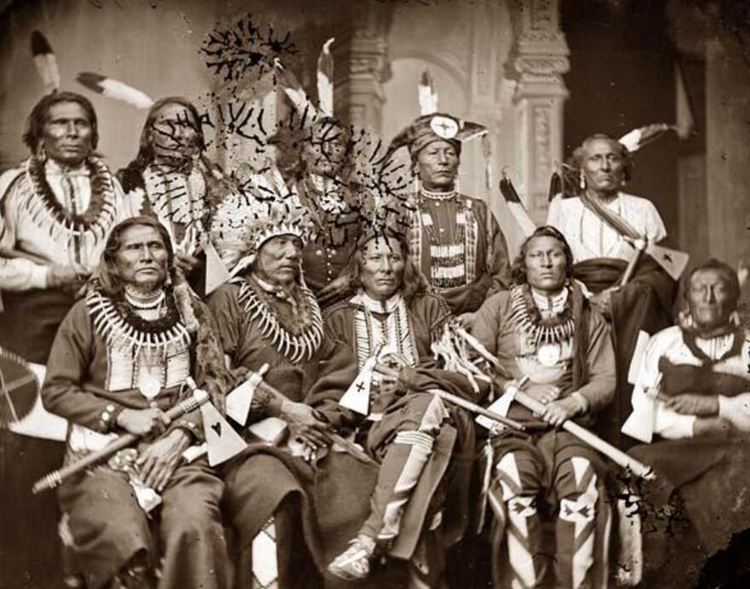
Their lifestyles differed in terms of their environments, regions, and resources. So, to form a more manageable timeline, archeologists identify shifts in culture and material use in Indian American life.
Native American archeology dates back to artifacts to 17,000 BC. It consists of various materials, forming a collection of thousands of artifacts. These artifacts include a part of a cultural shift, which archeologists identified and characterized into different periods, starting with the Pre-Paleoindian period and ending with the Historic period.
Pre-Paleoindian Period (17000-12000 BC):
The Pre-Paleoindian period refers to the inhabitation of the Americas in the period before the Paleoindians or Paleoamericans.
However, many experts refute the claims of any human settlement before the Paleoindian period.
Paleoindian Period (12000 – 8000 BC):
The Paleoindian or Paleoamerican period was the first time people migrated to the Americas. The term applies specifically to the “lithic” period.
Evidence suggests that people during this period were hunter-gatherers who survived on food gathered from the wild via hunting. These social groups comprised around 50 people and were frequent migrants, depending upon the climate and seasons.
The earliest evidence of their existence comes from stone tools, especially scrapers and projectile points, which slowly evolved with advanced techniques and materials.
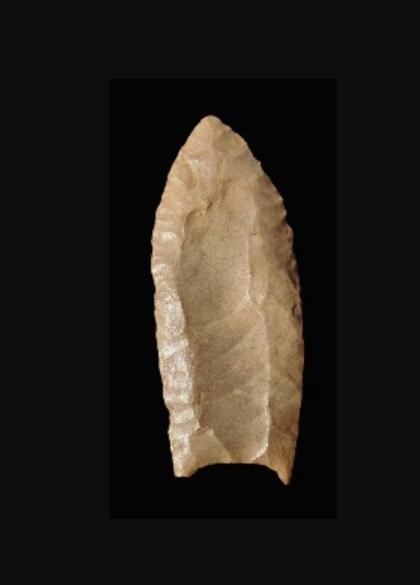
Archaic Period (8000 – 3000 BC):
This period is characterized by more modern methods as the environment took a turn and shifted to more modern techniques. People from this era used basic sustenance methods by exploiting seeds, nuts, and shellfish.
The shift in artefactual developments included using atlantl, ground and polished stone artifacts, projectile points were now more notched and pointed, and containers made of stone.
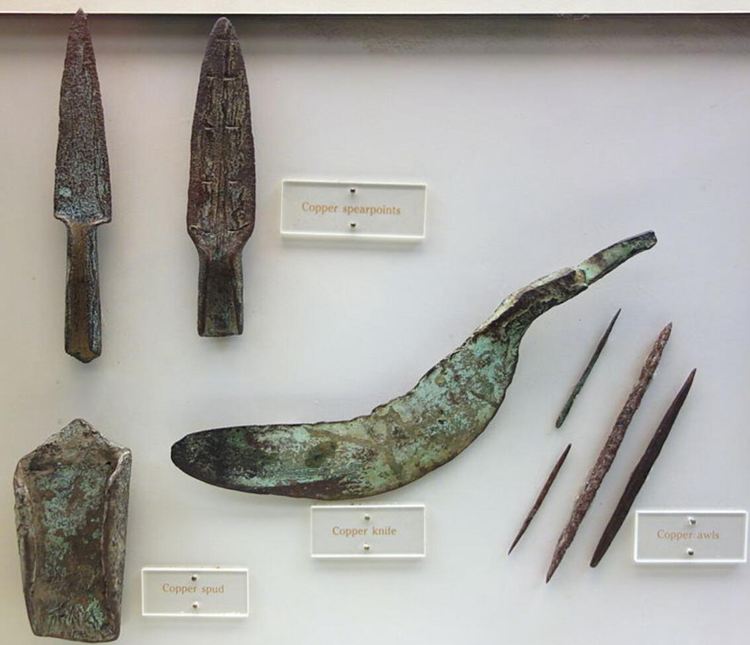
Woodland Period (3000 BC – 1000 AD):
Archeologists use the Woodland period to designate the period before Christopher Columbus explored America. It is marked by textile, shelter, agriculture, weapons, and tools development. Ranging from the BCs to the ADs, it began with the use of spears and atlatls, eventually leading to their replacement by bows and arrows.
As for artifacts, there were significant improvements in the art of pottery, decorations, and manufacturing methods. The most significant improvement was in ceramics, with non-utilitarian artifacts constructed using copper, mica, obsidian, and ocean shells.
The Late Woodland period used sand, limestone, grog, and grit temper in their pottery, which was textile-marked and stamped.
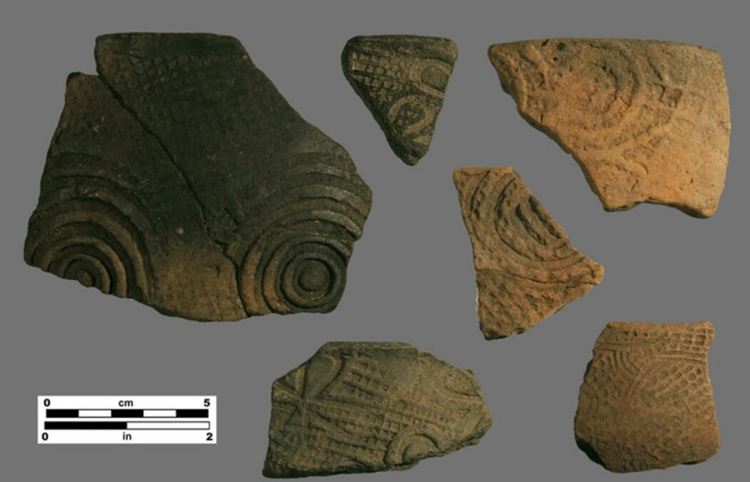
Mississippian Period (1000 – 1520 AD):
The Mississippian period was characterized by well-constructed and managed villages, resorting to horticulture and domestic animals for survival.
Artifacts in this period were complicated, incised, and well burnished.
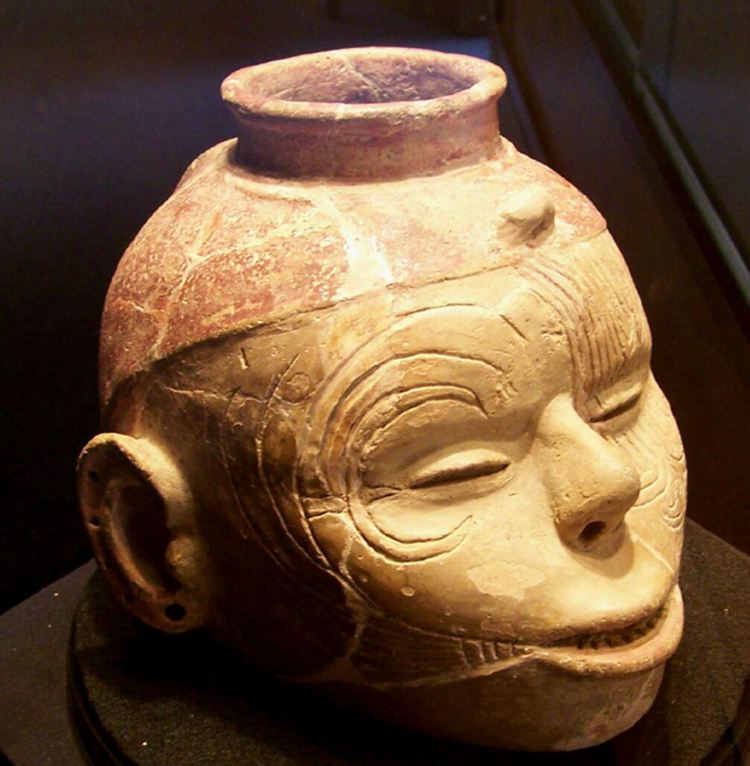
Exploratory Period (1520 – 1670 AD):
European sailors and explorers’ exploration of North America marks the exploratory period. It began with the arrival of the Spanish, who quickly dismounted the local Native Indian population and set up Santa Elena as the capital of La Florida. The appearance of the French followed this, and white settlers’ attempts to drive out settlements led to a drastic decrease in the Native American Indian population.
This Exploratory period led to the introduction of Spanish materials into local Native American materials, improving the art.
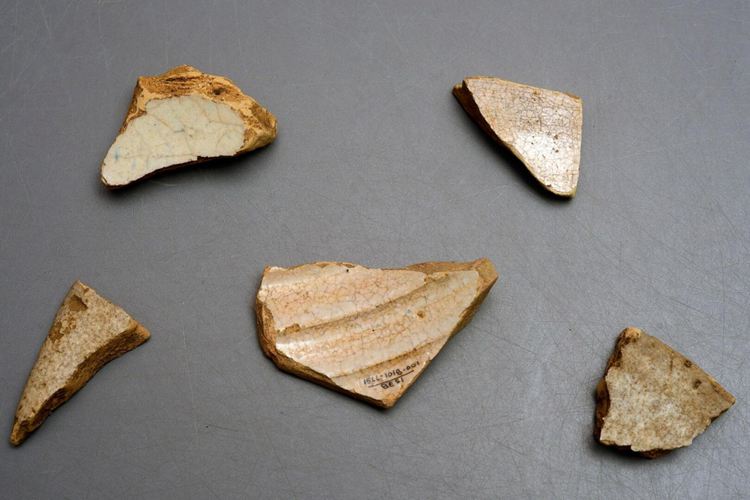
Historic period (1670 AD to present):
With the arrival of the British in the 1600s, deerskin trading began, which marked the Historic period. Intense fighting between the two sides resulted in a significant reduction in the Native Indian population and migrations to new parts of Indian territory.
Native American materials were largely replaced by English items, firearms, glass beads, and European-American materials.
Native American Artifacts Identification and Value Guide:
Identification:
From stone tools to the complex art of pottery, Indian American artifacts reflect this fascinating population’s rich culture and aesthetics. These artifacts are significant for archeologists, collectors, researchers, and the descendants of the people who created them.
Learning to identify them can assist you in many ways. It requires years of expert training to pinpoint and identify a Native American artifact. Still, you should keep a few things in mind when looking at one!
Ground-Stone Tools:
For Native American ground stone tools, it is essential to recognize the material used in the tail. Several types of materials that were commonly used include chert, obsidian, and flint.
Tools produced were abraders, axes, banner stones, boat stones, boiling stones, bola stones, canoe anchors, celts, chisels, cones, hammerstones, mauls, mortars, net weights, nutting stones, paint stones, plummets, spatulas, spuds, and splitting wedges.
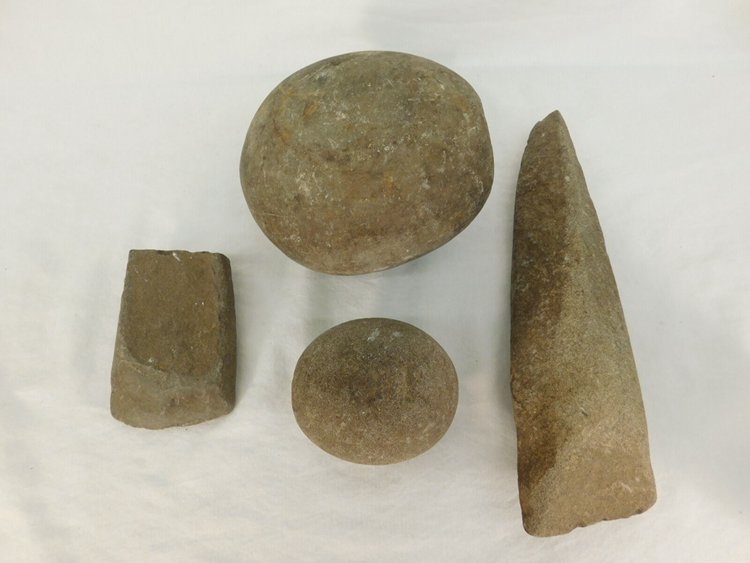
Projectile Points:
In spearheads and arrowheads, looking for a defined edge and a base with a clear point is essential. Knives constructed by Native Americans had at least one sharp edge, made by chipping stone away from the piece.
Projectile points can have a stemless, stemmed, and notched form.
Stemless Form:
These can be lanceolate, which include Angostura, Bascom, Beaver Lake, Adena blade, Camp Creek, Candy Creek, Cumberland, Dalton forms, large ceremonial blades, and Quads.
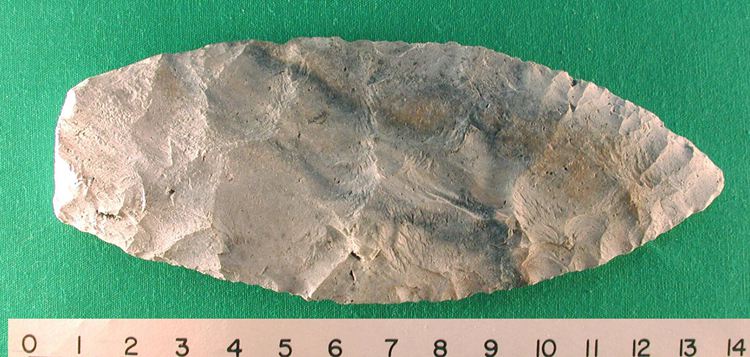
Triangular stemless projectile points include Caraway, Clements, Badin Crude Triangular, Late Woodland Triangular, Jack’s Reef Pentagonal, Mississippian Triangular, Pee Dee, Pinellas, Vincent, and Yadkin.
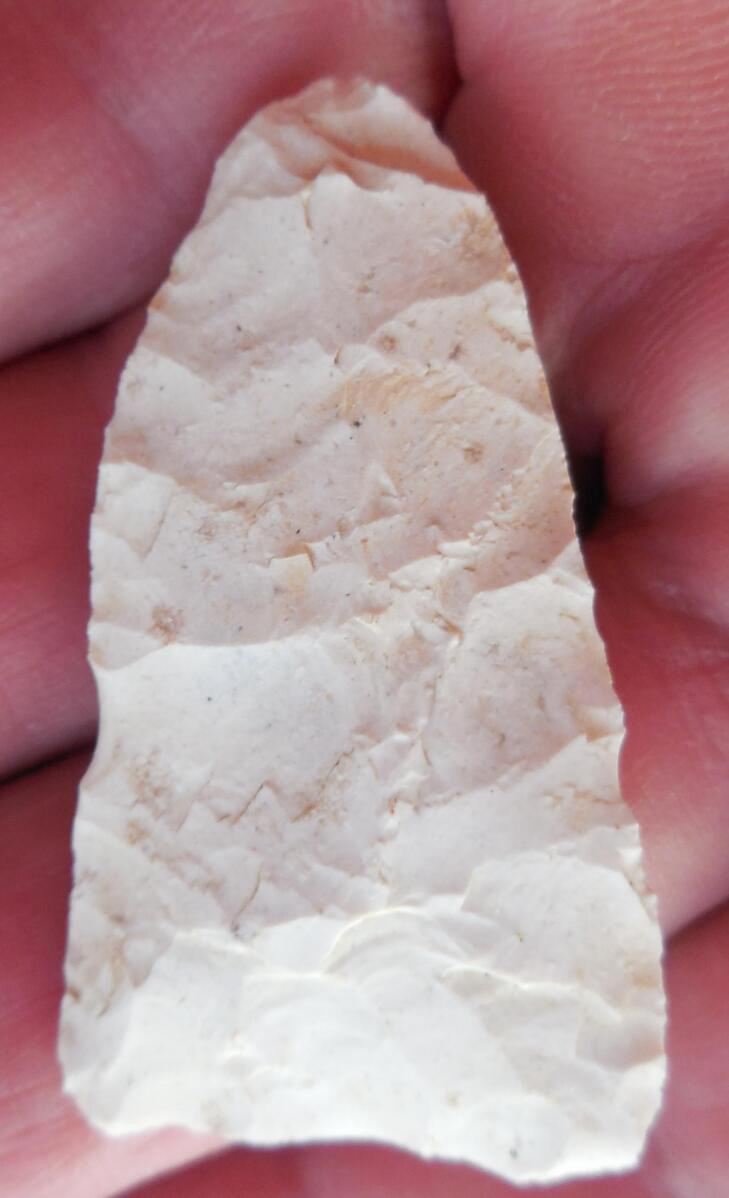
Another subtype is auriculate stemless form, tools forming part of it are Chipola and Mustache Simpson.
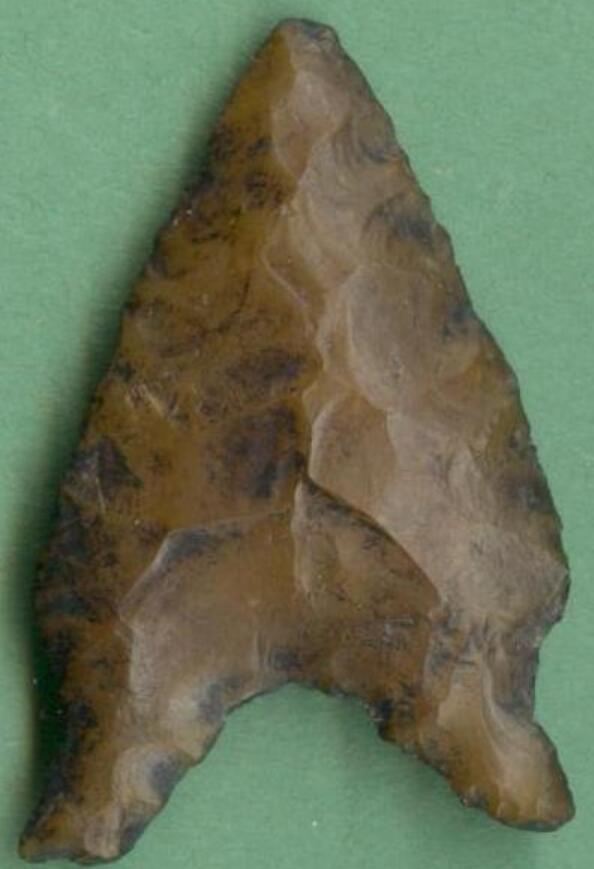
Notched Form:
Side-notched forms include Big Sandy, Bolen Side Notched, Damron, Knight Island, and Osceola, to name a few.
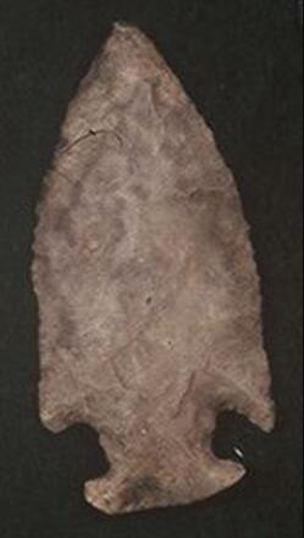
Similarly, corner-notched projectile points include Corner Tang Knife, Jack’s Reef Corner Notched, Kirk Corner Notched, Palmer, Pine Tree Corner Notched, Plevna, and similar objects.
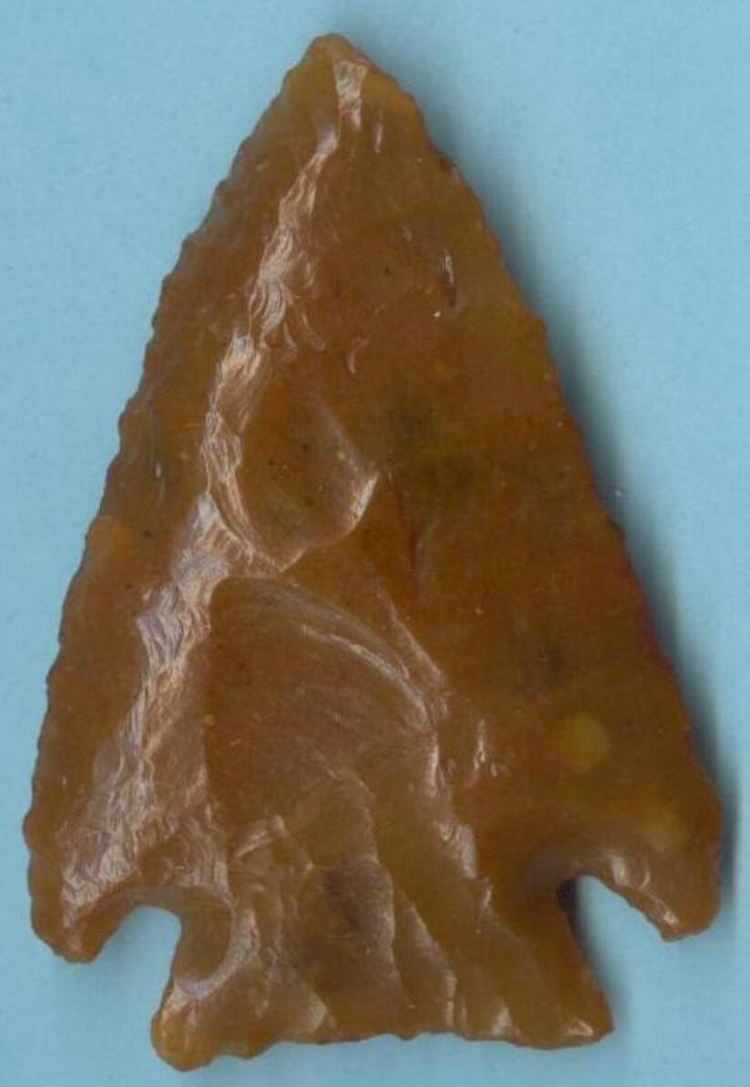
Basal-notched artifacts are Citrus, Eva, and Hernando.
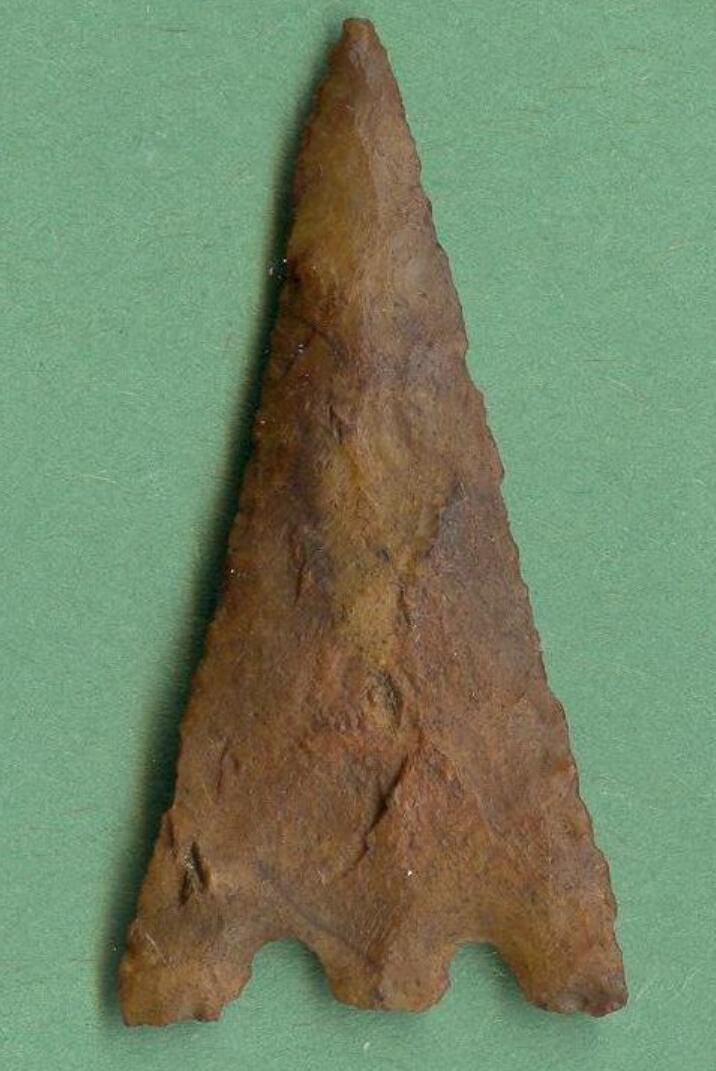
Stemmed Form:
Stemmed artifacts have wide varieties, such as Abbey, Adena, Afton, Alba, Bakers Creek, Big Slough, Boggy Branch, Buzzard Roost, Cave Spring, Ebenezer, Crawford Creek, and Hardee, to name a few.
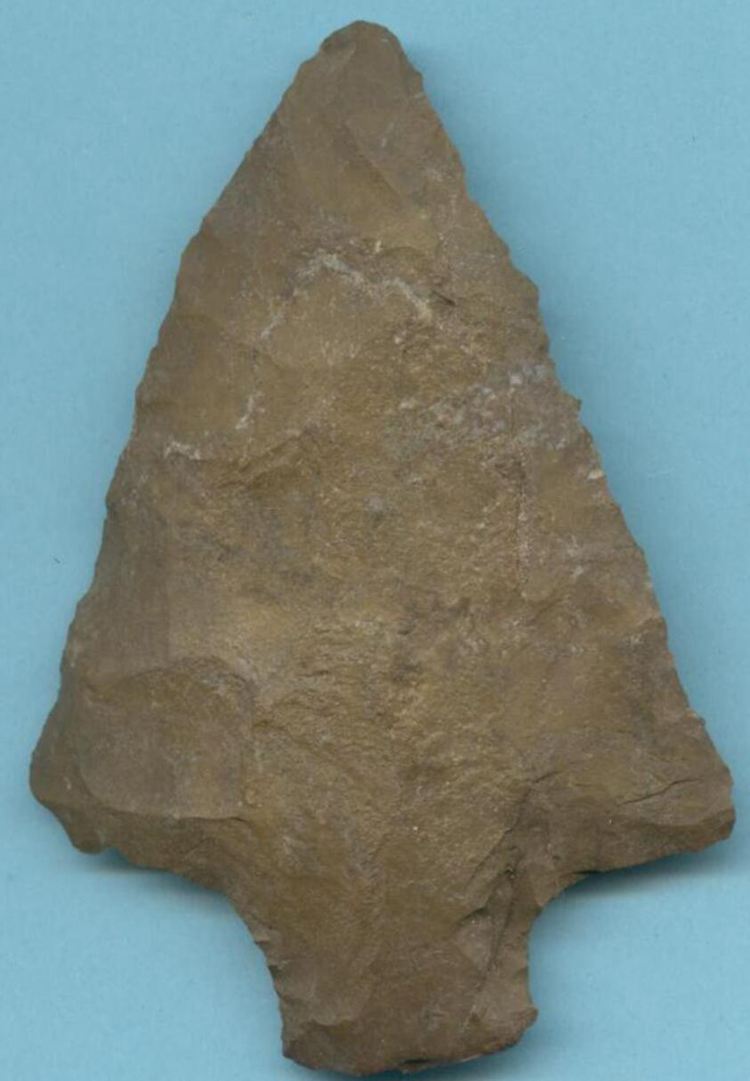
Spike-point projectiles include Woodland Spike, Benajmin Point, Bradley Spikes, Flint River Spikes, New Market Spikes, and Schild Spikes.
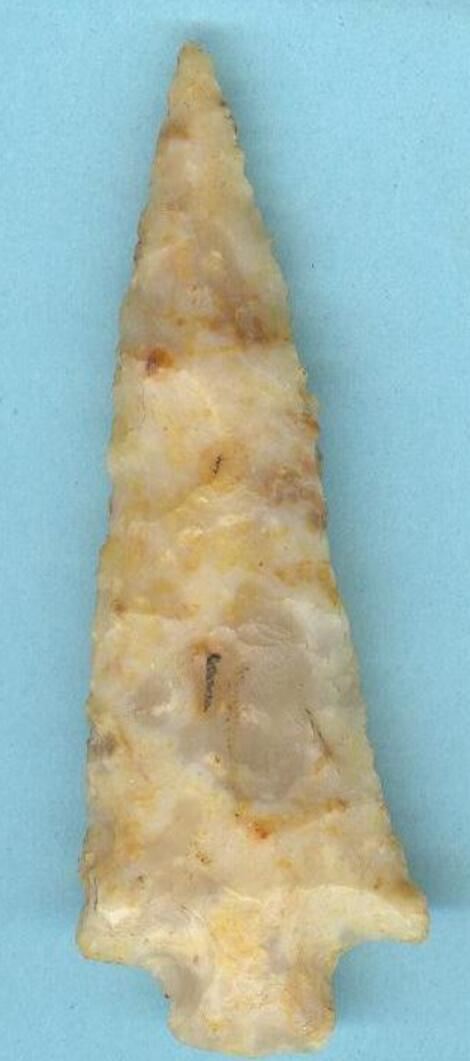
Similarly, Kaskaskia is a metallic projectile.
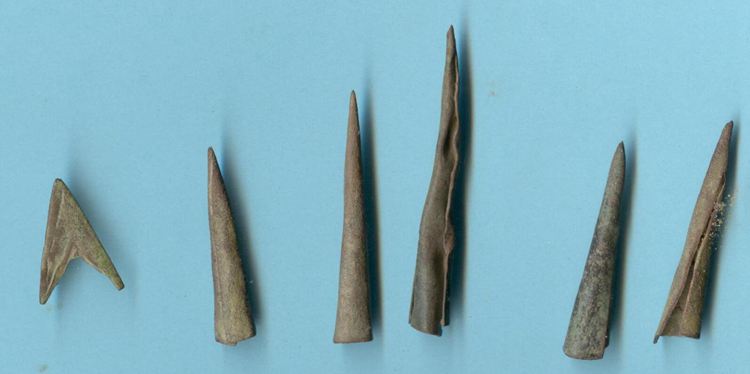
Bone and Shell Tools:
While Native Americans commonly used animal bones to make useful instruments, shells were another source of material used by populations living close to oceans and thus, were an important part of their culture.
In bone tools, it is vital to look for irregularities compared to the original shape. A bone tool might be carved into a form the bone usually wouldn’t have.
Bone and shell tools commonly used include the Antler Atlatl Weights, Antler Projectile Points, Antler Drifts, Bone Beamers, Bone Sickles, Bone Needles, Bone Scrapers, Rib Awls, Weaving Shuttles, Fish Hooks, and Bone Chisels.
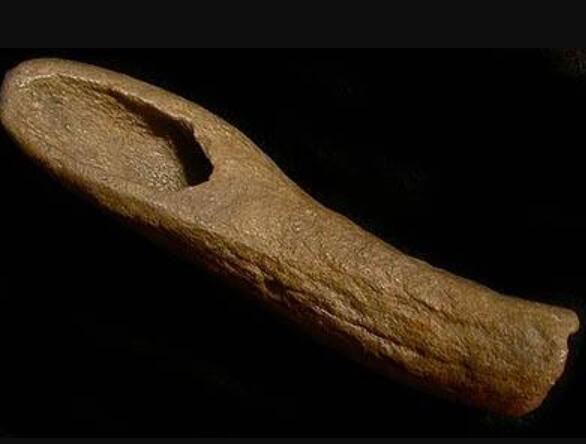
Other antiques that may, particularly interest collectors and historians, which Native Americans commonly used, include:
- Pipes
- Beads
- Clothing: Decorated clothing represents a vital part of Indian culture that you can easily find today. Beads of different shapes and sizes were commonly used on clothes and jewellery.
- Basketry
- Effigy Figures
- Game Stones
- European Trade Goods
- Flaked Stone Tools
- Pottery: You can find Native American pottery and broken pieces of it. Look for indications that it was created by human hands, including stamped design, painting, and carving.
- Ceremonial Ceramic Pottery
- Wooden Artifacts
- Metallic Artifacts: Metals were also commonly used by Native American people for a variety of objects, including jewelry, ornaments, and spearheads. Although many metals corrode over time, copper, silver, gold, and iron were used, which still survive.
Similarly, you can consult guides to identify your antique piece. One that is particularly useful for this is:
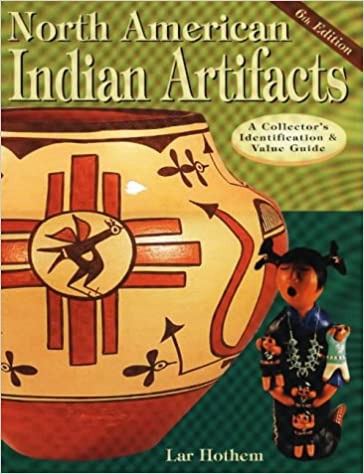
The book describes, illustrates, and lists the market value of Indian artifacts, including arrowheads, slate ornaments, tools, pottery, baskets, clothing, pipes, weaving, dolls, and jewelry.
You can also find help on YouTube if you’re a visual learner.
Value and Price Guide:
If you have an Indian artifact that has been passed down the generations, you may not know the value of your antique. Determining the value of your artifact is a complex procedure. It involves justifying the legitimacy of the object, establishing a timeline, the condition of your artifact, assigning it to a tribe, and judging the market demand.
Several factors influence the value of Native American artifacts, which include:
History:
This is a significant factor contributing to the price of a Native American artifact and influences the value to a great extent. It includes information about the production and location of the artifact, where it was found, and who owned it.
Experts believe this factor helps link the object to a particular phase of history, which also drives the value. For example, an important artifact related to a specific battle will be worth more than a general tool used for farming.
Such information is vital to determine the authenticity and legitimacy of your piece. Generally, the better the provenance or history, the higher the price your piece will fetch.
Condition:
The most critical factor in the valuation of any antique is the condition. Generally, the better the condition, the higher the value will be. If your piece is in mint condition, it will rake in much more than an antique that shows wear and tear. However, older and rarer pieces may be considered of higher value than normal ones.
Similarly, if your artifact is missing a piece, it will significantly reduce its value. Collectors and enthusiasts prefer articles that are complete and in good condition, so if your piece is in bad shape or has a missing part from the original design, it will usually not be worth a lot.
Age:
Older artifacts are difficult to find and hold more historical value than their modern counterparts. They are also rarer and are generally more valuable.
Age is generally a good indicator of value. However, there are exceptions to this rule, as some modern artifacts may hold more historical significance than modern ones.
Artifact Appraisals:
Appraisals are the best method to get the value of your artifacts estimated. Because several factors influence the value of a Native American artifact, it is best to seek the help of a professional.
It is pertinent to mention that if you suspect something of value in your possession, you should contact an appraiser with expertise in Native American artifacts and culture.
Note: Be mindful of appraisers who wish to buy your artifact. This usually signifies the importance of your antique, and thus, you should get a second opinion from another professional.
Some professional appraisal services you can consider include:
- Native American Art Appraisals, Inc. is an organization conducting in-person appraisals only. It will provide you with all relevant values and authentic information.
- Indian Artifact Grading Authority offers online and in-person appraisals but does not provide insurance values. The authority also provides a service of providing certificates of authenticity.
- Elmore Art Appraisals works with professional museums and individuals, providing expertise related to Native American arts and artifacts.
- McAllister Fossum is a fully accredited organization specializing in Native American artifacts and the Northwest Coast and Alaska culture.
Guide Books:
Guide books are an essential source of identification that can help you assess the value of your Native American artifacts. Some of the prime examples include:
- Ornamental Indian Artifacts, Identification and Value Guide: The book has 1800 colored illustrations, with information on materials, size, types, origin, and the value of artifacts. The book provides a brief history of the artifacts and auction prices as well. You can order it from Amazon.
- Rare & Unusual Indian Artifacts: Identification and Value Guide: Covers rare artifacts usually left out of books, identifying and assessing their values while differentiating them from the more common ones. It is available on Amazon.
- Indian Axes and Related Stone Artifacts (Indian Axes & Related Stone Artifacts: Identification & Values): Solely covering pre-historic Indian axes and their transformation over time, this book is helpful for collectors. You can order it from Amazon.
- Arrowhead Adventures: the Ultimate Guide to Indian Artifact Hunting: The book focuses on Indian arrowhead artifact hunting, providing in-depth knowledge and guiding a beginner to operate at an expert-level knowledge base. It is available on Amazon.
Most Valuable Native American Artifacts Ever Sold:
If you own an Indian artifact, it is only human to wonder what it could go for. It may only get you an ice cream or incorporate into this list of the most expensive Indian artifacts ever sold:
- Bella Coola Polychromed Wood Mask – $433,000.
- Nez Perce Beaded Hide’s Man Wearing Shirt – $158,500.
- Nez Perce Beaded Hide Dress – $86,500.
- Cheyenne Beaded and Quilled Hide Pipe Bag – $68,500.
- Arapaho Beaded and Fringed Hide Child’s Shirt – $59,375.
- Hopi Kachina Figure – $43,750.
- Classic Navajo Child’s Blanket – $43,750.
- Wahpeton Sioux Effigy Wood Stem and Catlinite Pipe Bowl – $25,000.
- Arrowhead from 4000 BC – $10,000 – 20,000.
- Plains Indians Tomahawk – $6000 – 8000.
In addition to being a prized collection and possession, these artifacts symbolize cultural diversity and heritage.
Native American Artifacts Buying/Selling Tips:
Legal Standing:
For collectors showing particular interest in Native American artifacts, you should keep a few things in mind concerning the legality of buying/selling.
It is vital to note that the Native American Graves Protection and Repatriation Act (NAGPRA) is a federal law passed in 1990 that protects human or object remains associated with burials or funerals. The law forbids collectors’ buying/selling of these objects on the open market. In short, any object that has a “cultural association” or comes from a “burial or funeral site” is strictly prohibited for private collections and trading.
Suppose you found an old Native American artifact in a national park or from tribal lands, and you decide to keep it. In that case, it belongs to the State, and it is illegal for you to own the possession. The ARPA, or Archeological Resources Protection Act, bars the excavation/removal of artifacts from Federal or State land.
Selling Native American Artifacts:
Suppose you have an Indian artifact passing down the generations as a family heirloom, or you’ve fulfilled the legal obligations surrounding the possession and ownership of Native American artifacts. In that case, you can sell it in several ways. These include:
- Arrowheads: is an artifact-related website that you can use to sell your Arrowheads or any unwanted Indian artifact. The website is a premier marketplace with access to the best authenticators to the hobby. The company claims to offer the best prices for your Native American artifacts.
- SellIndianArrowheads: is another platform that actively buys Native American artifacts. The company requires all relevant information and pictures of your artifacts that it can use to estimate the value of your piece and accordingly offer you a price. However, the company claims to offer top dollar for antiques that fit its requirements!
- IAGA: As already mentioned, the Indian Artifact Grading Authority offers to buy your articles in single pieces or entire estates.
- Heartland Artifact Auction: is an online auction house specializing in auctioning Native American artifacts. The company guarantees the authenticity of its pieces and also buys ancient Native American Indian artifacts and relics hosted in its weekly, monthly, and yearly auctions.
- eBay: provides an online marketplace for buying/selling Indian artifacts.
- Etsy: with its specialized antique market, provides an extensive marketplace to look for the right buyer of your Native American art.
- LiveAuctioneers: An online auction house with a wide variety of Indian artifacts available, with some selling for very high prices. You can list your object here as well!
- Hindman: Native American, tribal, and pre-historic specialists work with private collectors, dealers, and museums to make the best Indian artifacts available to their customers. The company also buys from individual sellers, so your luck line could shine here!
Final Thoughts:
The Native American tribes have a rich history in the Americas, dating back thousands of years. These tribes embody a rich cultural heritage and have a historical-artistic significance. This is reflected in their artifacts; thus, treating them as such is equally important. Hence, they become a part of your collection uniquely.
Native American artifacts have a particular appeal to them, making them highly sought after in the market. Identifying and valuing your piece can be a challenge. Still, it is a necessity as many fake varieties are reproduced as sold as original Indian artifacts.
Identification is necessary, followed by the factors influencing their value and the historical significance behind your artifact. That being said, I hope this guide provides you with resourceful information regarding all of the questions you might have.
So, the next time you’re throwing around boxes in the attic or looking to make some extra money from a useless collection, make sure you don’t sell yourself short!





![Where To Sell Antique Furniture In 2022 [Ultimate Guide]](https://www.jacquelinestallone.com/wp-content/uploads/2022/09/Etsy-Your-Place-To-Buy-And-Sell-All-Things-Handmade-600x450.jpg)


